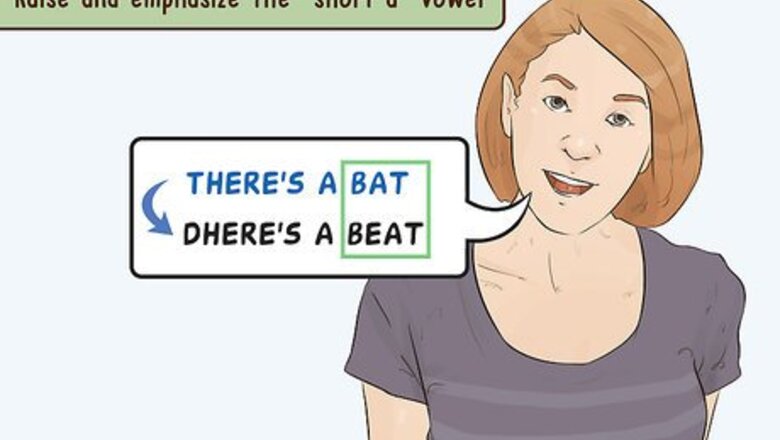
views
Tweaking Vowels and Consonants
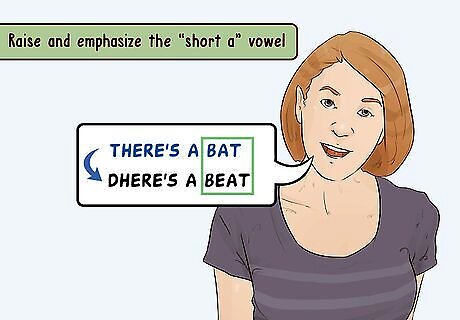
Raise and emphasize the “short a” vowel. This is the vowel you'll find in words such as bat and cat. Chicagoans pronounce this vowel with their tongue closer to their teeth and higher in their mouth. With this pronunciation, a word like “bat” ends up sounding more like “beat.”
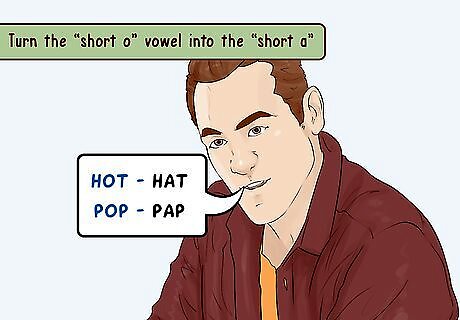
Turn the “short o” vowel into the “short a.” As the short a turns into a different vowel, the short o comes into replace it. This turns “hot” into “hat” and “pop” into “pap.” You don't want to exaggerate this shift too much; look up Chicagoans speaking on YouTube to understand the subtlety of this shift.
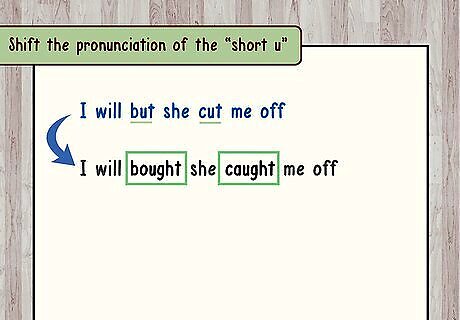
Shift the pronunciation of the “short u.” With this shift, words like “but” and “cut” sound more like “bought” and “caught.” This is the last of the main three vowels most Chicagoans shift; they are the most recognizable differences in this accent. Learning these three vowel shifts will give you a more universal sounding Chicago accent. Other variations on the pronunciation of vowels vary depending on specific neighborhoods within the city.
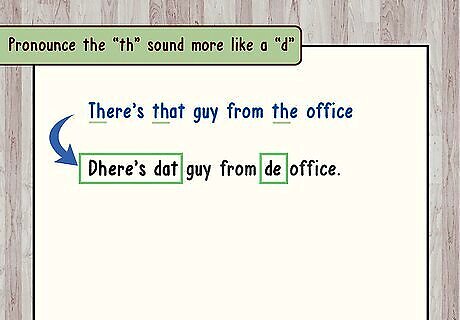
Pronounce the “th” sound more like a “d.” You don't necessarily want to use a hard “d” like in the famous Superfans Saturday Night Live sketch. You want the resulting sound to end up somewhere between how you would usually say a “th” and a “d.” The trick is in the placement of your tongue. With a regular “th” sound, your tongue is placed between your teeth as you begin saying it. With the Chicagoan “th,” your tongue starts behind your teeth, though make sure to still keep your teeth apart. For instance, “There's that guy from the office” becomes “Dhere's dat guy from de office.”
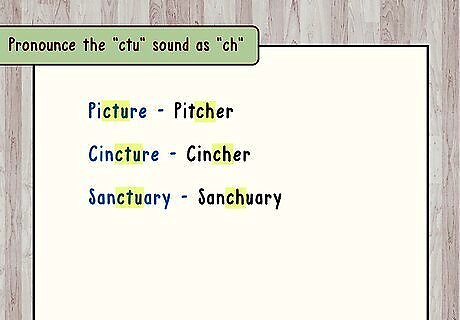
Pronounce the "ctu" sound as "ch." The word "picture," for instance, commonly pronounced in Chicago as "pitcher." "Cincture" becomes "cincher," sanctuary becomes "sanchuary," and so on.
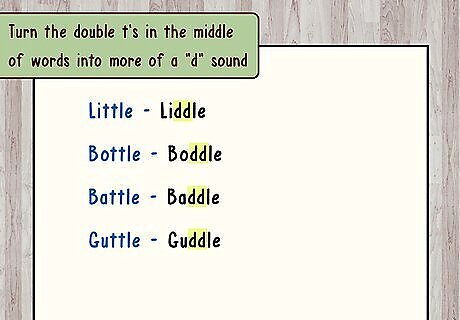
Turn the double t's in the middle of words into more of a "d" sound. In other words, "little" and "bottle" become "liddle" and "boddle." Don't exaggerate the pronunciation of the “d,” or you'll start sounding like a parody.

Slur your words. Many Chicagoans slur their words slightly when they speak, letting them run into each other. This is especially true when one word ends with a vowel sound and the next one begins with one as well, though it also occurs with consonant sounds. For instance, when saying "Where are you at?", "where" and "are" are blended together so that it sounds like "Wherer," whereas "you" and "at" are contracted to "y'at." All together, this phrase should sound like "Wherr yuh-at?" If your answer is "4200 North Pulaski," you say "Forty-two hunnerd," not "Forty-two hundred."
Using Chicago Lingo and Vocabulary

Learn the "correct" names for Chicago landmarks. People from outside of Chicago often share the misconception that various Chicago landmarks and locations' names are those seen on the signs. Real Chicagoans typically substitute their own vernacular for these locations, for instance : It's the "Sears Tower," not Willis Tower. It's "Marshall Fields," not Macy's. It's "Comiskey Park" or "Sox Park," never, ever US Cellular Field. It's the "Bean," not Cloud Gate.
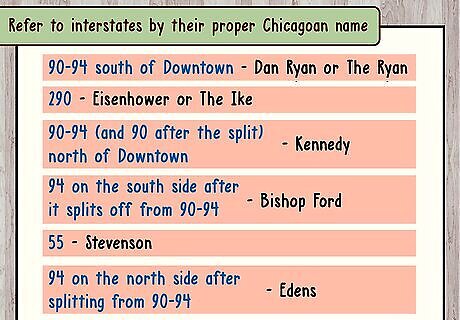
Refer to interstates by their proper Chicagoan name. In Chicago, the large, multi-lane highways for automobiles that are part of the national Interstate Highway System are not, in fact, "interstates." They are instead called expressways or highways. Better yet, call these highways by their honorary Chicago names. See below: 90-94 south of Downtown = "Dan Ryan" or "The Ryan." 290 = "Eisenhower" or "The Ike." 90-94 (and 90 after the split) north of Downtown = "Kennedy." 94 on the south side after it splits off from 90-94 = "Bishop Ford" 55 = "Stevenson." 94 on the north side after splitting from 90-94 = "Edens."
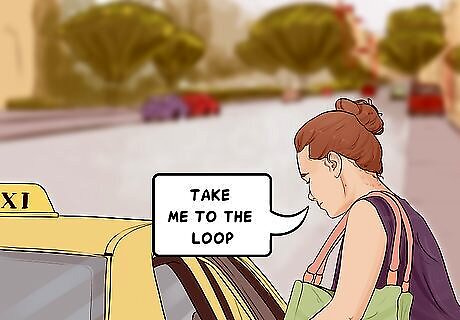
Learn the local names for the different parts of the city. When you're in Chicago, calling a part of the city by its "proper" name can be a dead giveaway that you're not a local. Below are some primary examples of Chicagoan names for different parts of the city: The downtown financial district is called "The Loop." Anything south of Roosevelt Rd. is called "The South Side," even though this includes more than half of the entire city. Conversely, anything north of Division is "The North Side."
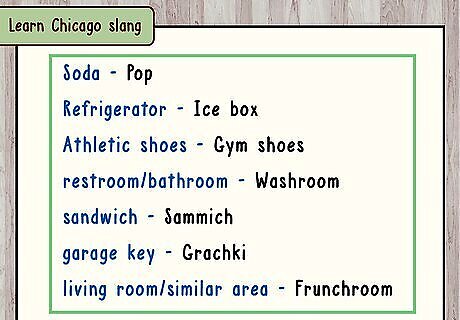
Learn Chicago slang. There are many terms and phrases that Chicagoans use that you'll need to know if you want to have a convincing accent. Some of these aren't unique to Chicago, as they are also found in other Northern cities. Here are a few examples: “Soda” is known as “Pop.” A “refrigerator” is sometimes referred to as an “ice box.” Athletic shoes are referred to as “gym shoes” rather than “sneakers.”

















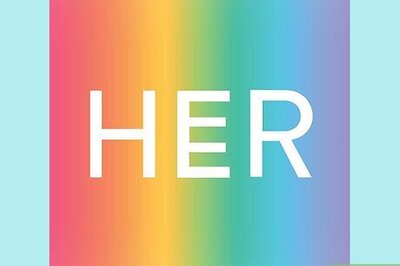

Comments
0 comment